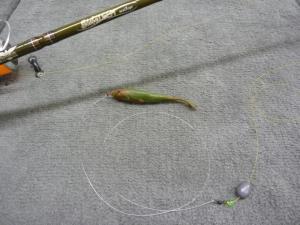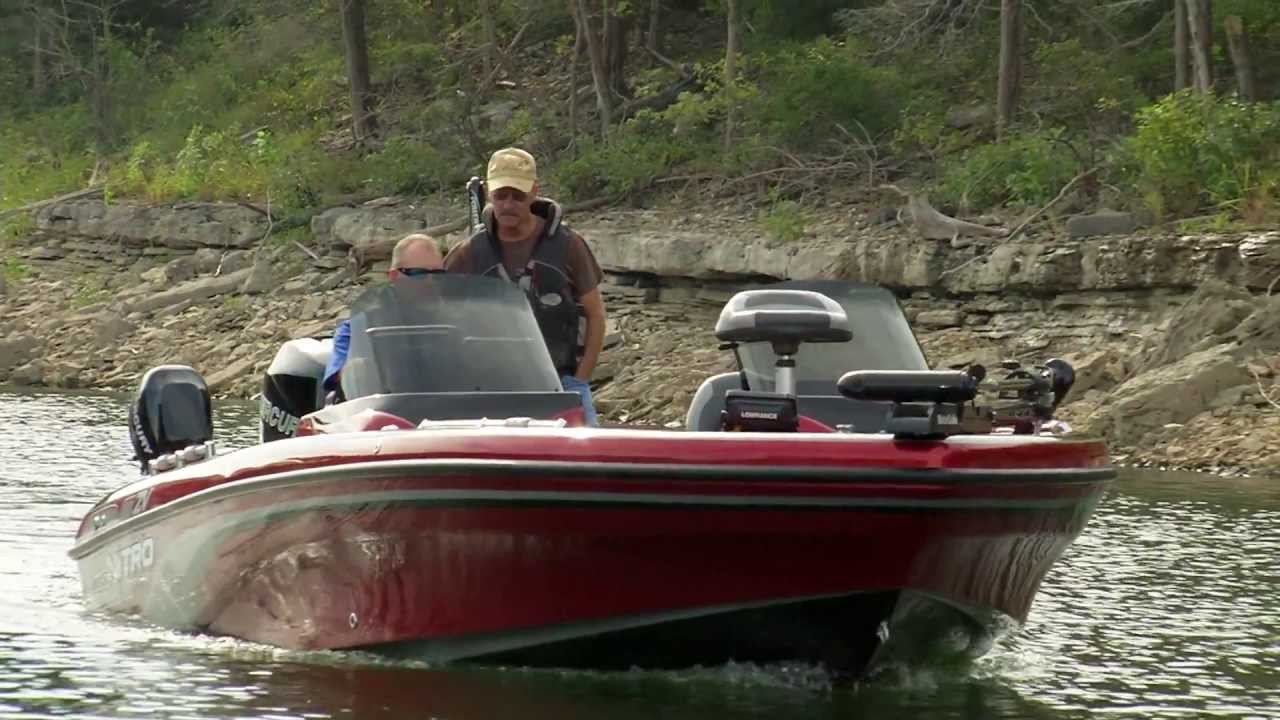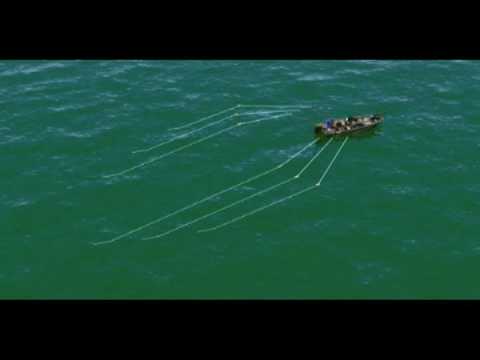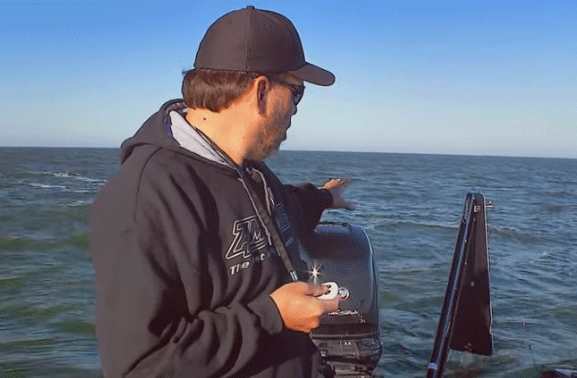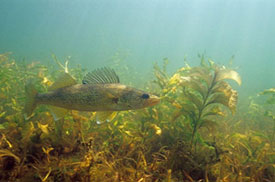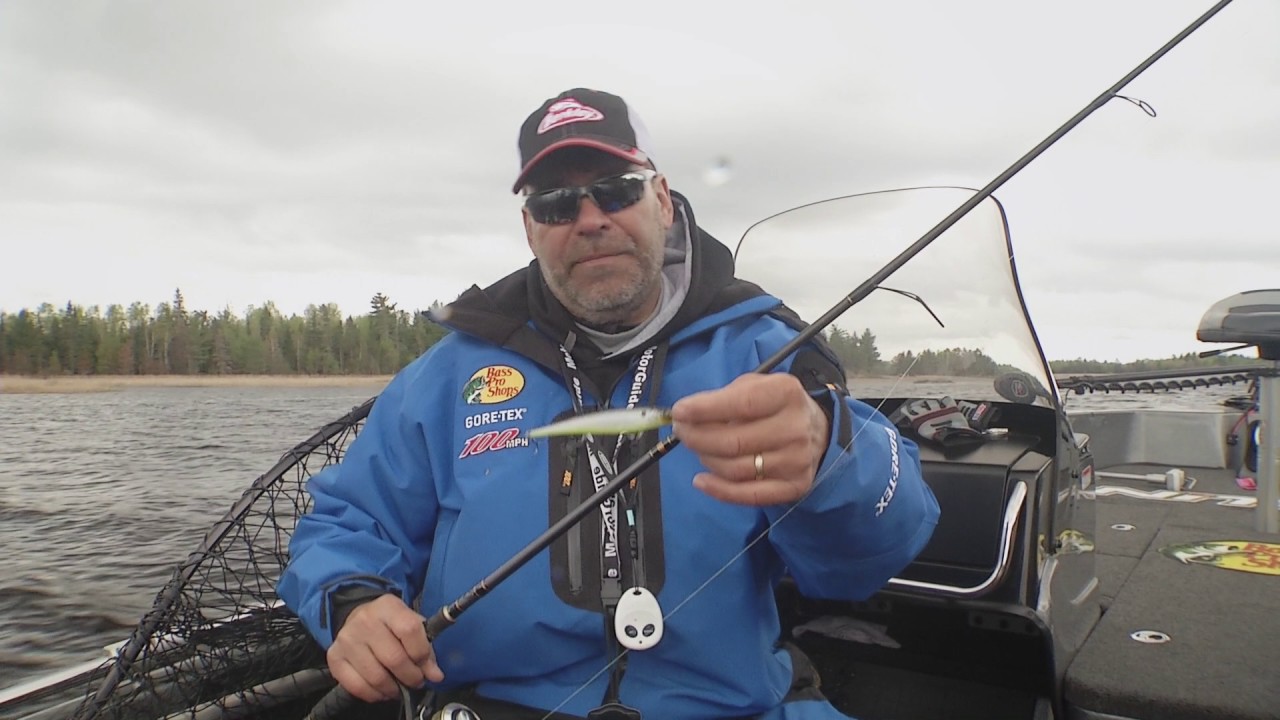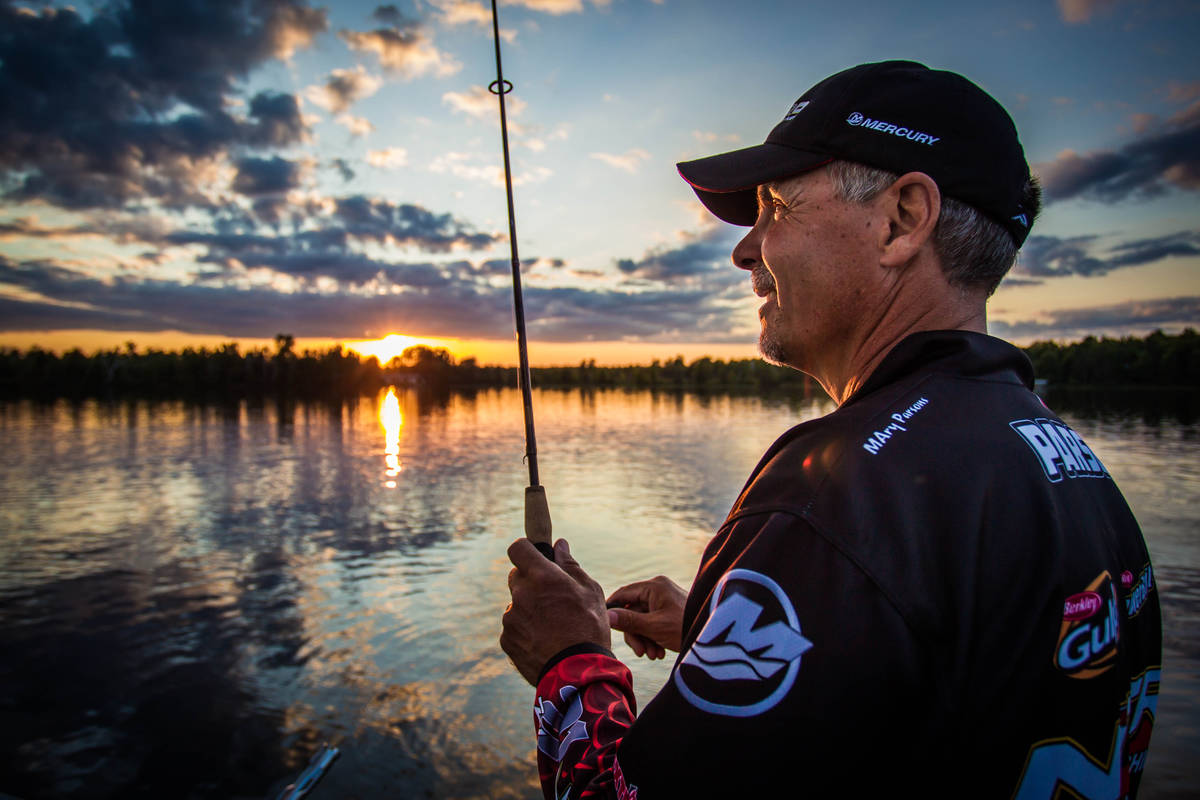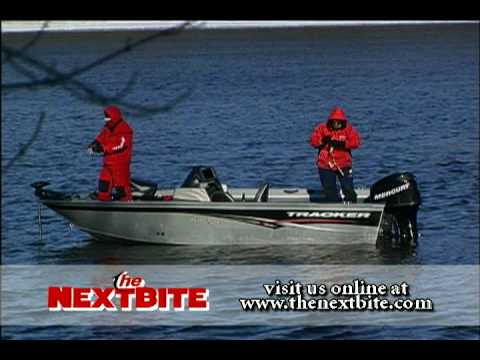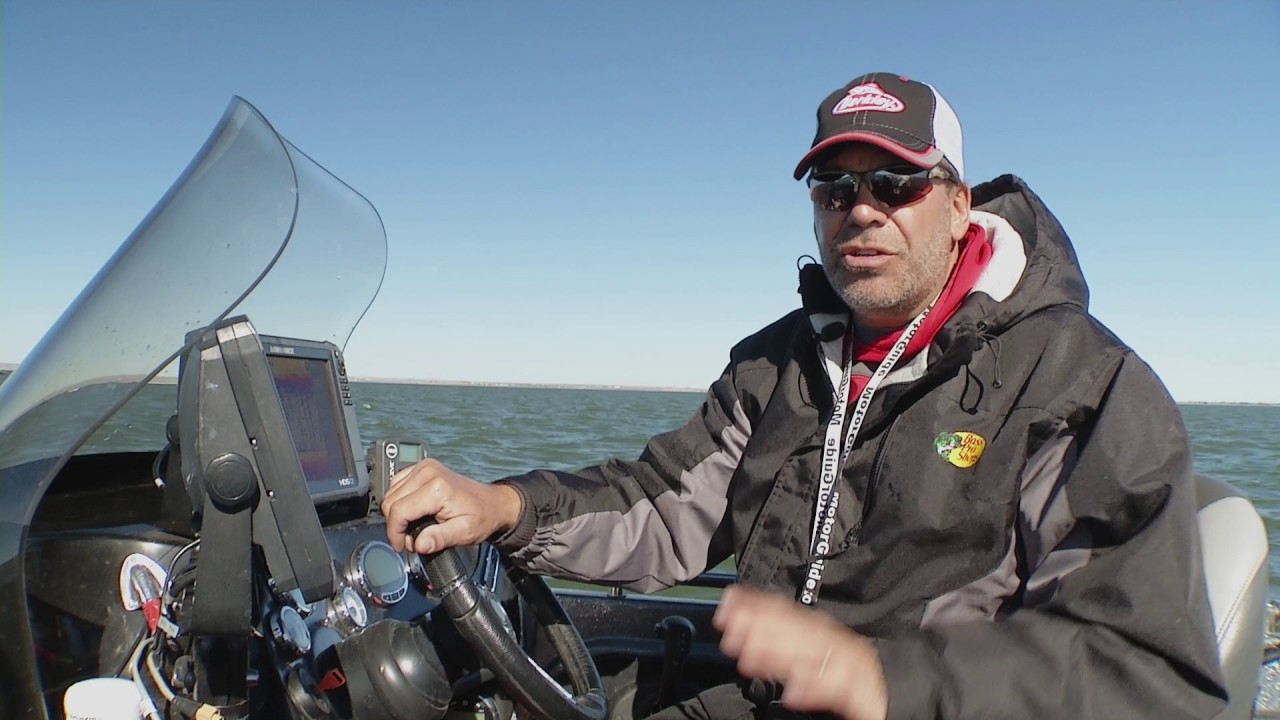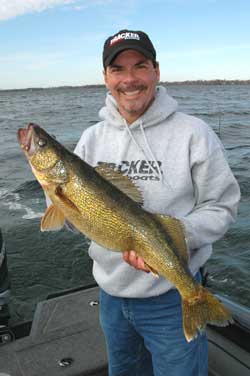 Jig Trolling is a technique designed to cover relatively small areas efficiently and with finesse. Its best done using the bow mount electric motor to move along structure slowly, looking to target walleyes that have made their transition from the flats and are beginning to congregate near sharper breaks. They’re not exactly bunched up, but they aren’t widely scattered over a piece of structure either. While the water temps have dropped significantly from where they were during the summer, the feeding activity of the walleyes really hasn’t. They may not be in a feeding frenzy, but they’re still in a feeding mood, looking to build up their reserves for the upcoming cold water season. Jig trolling is an ideal tactic for targeting these fish that could be considered “neutral” in mood.
Jig Trolling is a technique designed to cover relatively small areas efficiently and with finesse. Its best done using the bow mount electric motor to move along structure slowly, looking to target walleyes that have made their transition from the flats and are beginning to congregate near sharper breaks. They’re not exactly bunched up, but they aren’t widely scattered over a piece of structure either. While the water temps have dropped significantly from where they were during the summer, the feeding activity of the walleyes really hasn’t. They may not be in a feeding frenzy, but they’re still in a feeding mood, looking to build up their reserves for the upcoming cold water season. Jig trolling is an ideal tactic for targeting these fish that could be considered “neutral” in mood.
Total Solutions Technique
Normally when you think of trolling it conjures up visions of moving along at speeds between 1.5 and 2.5 mph, with lures trailing out behind the boat 100 feet or more. This is not the case when it comes to Jig Trolling. Remember, the object is to stealthily cover small areas efficiently. Moving along at ½ to ¾ mph is more the speed you’re looking for. Letting out too much line will also defeat the purpose of using a jig. Jigging, even Jig Trolling, requires a good feel of what the lure is doing at all times. It’s best to keep the jig at about a 45° angle to the rod tip to get the maximum sensitivity in the presentation.
Often I will graph a piece of structure looking for bottom hugging walleye marks and then choose one depth to cover with my jigs. By staying in one depth the amount of line out to the jig does not have to vary and I can concentrate on keeping bottom contact and feeling for bites. A simple “lift-pause-drop” action to the jig as you move along will keep the bait in the strike zone while maintaining good feel of the bottom.
As with all jigging presentations, be ready to set the hook immediately when a bite is detected. There are two important times to be ready for a bite. The first one being after the lift, when the pause will allow the jig to swim just above the bottom. During this pause, the line will be tight going to the jig and often a bite will feel like a “tick” or “thump”. This will be the easiest (and most memorable) bite to detect – set the hook! A second, much more difficult bite to detect is a “presence bite”. Often this occurs once you drop the jig to the bottom and are dropping back the rod for the next lift. During this time, there is no contact with the jig, the line is slack. Walleyes will often suck the bait off the bottom and hold it. The angler will feel the presence of weight when lifting the jig for the next stroke. Again, if you detect any weight, mushiness or “presence” – set the hook!
Total Solutions Equipment
The gear used for Jig Trolling is very similar to that used in other jigging techniques. A high-modulus graphite, 6 to 7 foot, medium to medium light action spinning rod works just great for this application.
Line choice is also similar to other jigging methods, with top choices being no-stretch Berkley FireLine in 6 pound test or low-stretch 6 pound test Berkley Sensation. The less stretch the line has the more it will telegraph through the rod just what’s happening with the jig. It’s important to maintain bottom contact, and using equipment that will enhance sensitivity will put you well ahead of the game.
When it comes to the “business end” of a Jig Trolling presentation, choosing the right weight jig is very important. As stated previously, maintaining bottom contact is key, so choose a jig that can be run at that 45° angle from the rod tip and still allow you to feel the bottom. Exact weight will be influenced by depth and wind conditions, but for most applications a 1/4 ounce to 1/2 ounce will work fine with 3/8 being the most common weight used.
Of course a jig is only as good as what you put on the hook to help trigger more bites. No doubt, a lively minnow is the number one choice of most fishermen. That’s not to say that live bait is the only jig dressing that will catch fish however. Since the bait is continuously moving throughout the presentation and the angler is imparting action to the jig as it’s bumped along the bottom, Jig Trolling offers excellent opportunity to experiment with plastic trailers. A Gulp Minnow or the Gulp 3 inch Fry can all be effective bait choices when Jig Trolling walleyes. These artificial tails are especially effective when durability is important. Situations might include small or unwanted fish plucking off the bait, snaggy situations where live bait is pulled off frequently, or times when the walleyes are half heartedly grabbing the bait and plucking off the minnows. Artificial tails often stay fishing longer and may even give you a “second chance” bite.
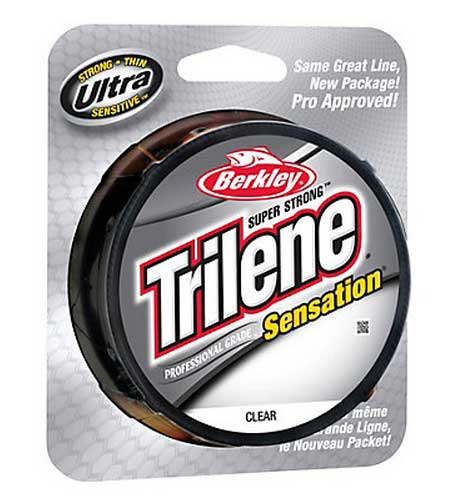
Berkley® Trilene® Sensation® |
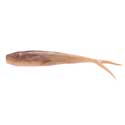
Berkley® GULP!® Minnow |
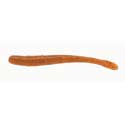
Berkley® 3 inch GULP!® Fry |
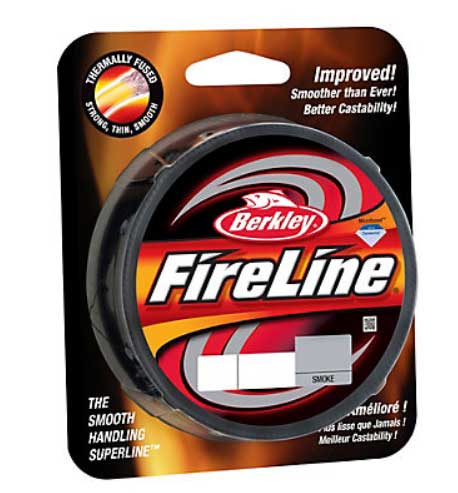
Berkley® FireLine® |

